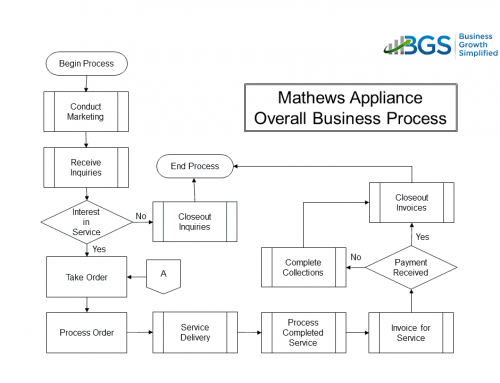Making changes in your business to improve performance is a great idea, but where should you start? That is a great question, however the problem is business owners and managers don’t have the right information to make changes. Therefore, they arbitarily change things without understanding the cause and effect of their changes on the revenue engine.
Here is a case many companies may be familiar. During past economic downturns many business cut marketing because it seems they spend a lot of money here; but what is the effect of cutting marketing? A decrease in leads. In a downturn the number of leads that it takes to create a new sale is going up, and cutting results in even bigger drops in sales which ultimately puts the business at even more financial risk .
Monitor the right metrics to see cause and effect.
Identifying these metrics can be time consuming and difficult. Here is a list of critical values you should be tracking for each stage of the revenue engine no matter what business you are in:
|
Total Revenue for Period
|
Close Percentage
|
Leads per month
|
|
Maximum Capacity for Your Business
|
Number of Sales per Month
|
Amount of time spent marketing
|
|
Total Revenue Generated at Maximum Capacity
|
Average Revenue Per Sale
|
Current $$$ spent on marketing per month
|
|
Cost to Add More Operational Resources
|
Money to Add More Sales Resources
|
Expense to Add More Marketing Resources
|
If you don’t currently know these numbers for your business consider it a red flag. Your business is at risk and you may not even realize it!
Analyzing Your Revenue Engine
Once you have these numbers, then you can analyze your revenue engine from the back to front of the cycle and identify the choke points along the way. First, make sure you have set a revenue goal for the year. Then determine if you can get there from your current position.
Review the cause and effect of your operations to verify the maximum revenue you can generate with your current resources. Compare this number to your revenue goal. If you cannot meet the goal you may need to add capacity, so know your cost you to add more capacity when you need it?
Next, review the cause and effect of your sales. What level of sales do you require to meet your revenue target? Again, do you have the sales resources needed to support the sales goal? If not, what will it cost you to add sales capacity to meet your goal?
Finally, look at how much marketing is needed to generate the leads to support the sales efforts. If your current marketing cannot support the goal, what will it take to improve your marketing, or cost you to add enough marketing support to reach the goal?
 Using this approach helps you more effectively set and prioritize the right objectives for your business. You will find it helps you make the correct changes and strategically focus on the right activities that provide real revenue impact and profitable growth for your business.
Using this approach helps you more effectively set and prioritize the right objectives for your business. You will find it helps you make the correct changes and strategically focus on the right activities that provide real revenue impact and profitable growth for your business.
Figure Out Your Business Cause and Effect
Getting this figured out is the job of your chief operations officer (COO), but this kind of talent can be cost prohibitive for a small business. To overcome this cost barrier use a fractional COO to help you on a part-time basis.
If you need help and don’t know where to start, we can help. DE, Inc. offers a fractional COO service. Click on the link to find out more and schedule a FREE 30-minute consultation.






[…] which distract the business owner from the real variables. The reality is there are only a handful of variables that tell an entrepreneur the health of their business and where he/she should be focused. But […]
[…] what do you monitor? I’ve written several posts on this topic. I recommend that you read Understanding Cause and Effect: What Do You Measure?; Poor Cash Flow – 5 Things That Could Be Causing It; Is Your Revenue Underperforming?; and […]
[…] so how do you predict the future in your business? Easy, by understanding the cause and effect of your operation by watching your business […]
[…] Once everything is being properly accounted for, you can begin using our Tuning Your Revenue Engine to define your operational metrics. Now, you can objectively measure everyone’s performance. Imagine how much less you’d worry if you could monitor every cause and effect in your business. […]